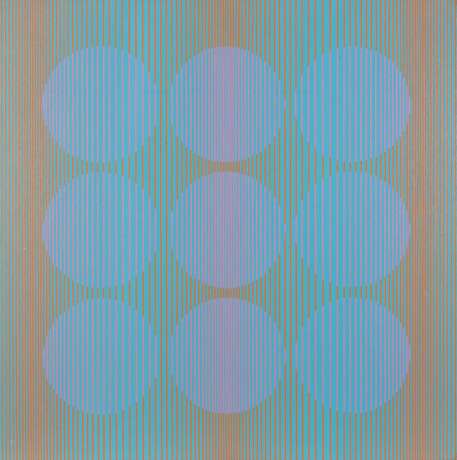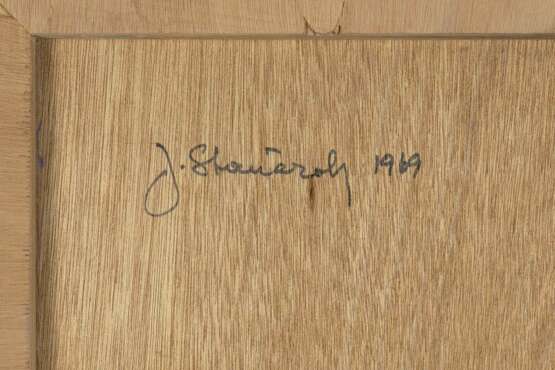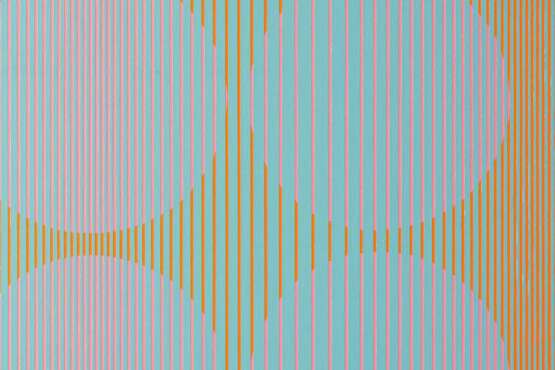ID 417771
Lot 229 | Dynamische Anordnung in blau und orange
Estimate value
€ 9 000
Dynamische Anordnung in blau und orange, Acryl auf Holz, 60,5 cm x 61 cm, signiert, 1969 datiert, Holzplatte hinten beschädigt; Julian Stanczak war ein amerikanischer Maler und gilt als Mitbegründer der optischen Kunst. Mit Ausbruch des Zweiten Weltkriegs wurde er 1939 in einem Arbeitslager in Sibirien interniert, in dem er die Funktionsfähigkeit seines rechten Armes dauerhaft verlor. Bis zu dieser Zeit war er Rechtshänder. Die Jahre 1948 bis 1950 verbrachte Stanczak in London, wo er am Borough Polytechnic Institute studierte. In den 1950er Jahren begann er mit Mitteln der optischen Kunst zu experimentieren, die Bekanntheit durch ihre präzisen Formmuster und geometrischen Farbstrukturen erlangte. Sein Oeuvre durchzieht seitdem ein Zusammenspiel aus dynamischer Intensität und zugleich auch unbesorgter Verspieltheit. Stanczaks abstrakte Kompositionen sind erfüllt von schwingenden Farben und optischen Täuschungen, die nichts von seinen traumatischen Erfahrungen des zweiten Weltkriegs preisgeben. 1952 emigrierte er in die USA. Dort studierte er zunächst am Cleveland Institut of Art in Cleveland, Ohio. 1954 schloss er das Studium mit dem Bachelor of Fine Art ab. Danach wurde er in der Yale University von Josef Albers und Conrad Marca-Relli unterrichtet, wo er den Abschluss Master of Fine Art machte. Julian Stanczak blieb der der Op-Art immer treu. Der Name der Stilrichtung wurde in Anlehnung an der großen Ausstellung \Julian Stanczak: Optical Paintings\", die 1964 in der Martha-Jackson-Galerie in New York City stattfand, gewählt. Optical Art, USA"""
| Auction house category: | Modern and contemporary paintings |
|---|
| Auction house category: | Modern and contemporary paintings |
|---|
| Address of auction |
WETTMANN | Auktionshaus an der Ruhr Friedrichstraße 67-67a 45468 Mülheim an der Ruhr Germany | ||||||||||||||
|---|---|---|---|---|---|---|---|---|---|---|---|---|---|---|---|
| Preview |
| ||||||||||||||
| Phone | +49 (0)208 3059081 | ||||||||||||||
| Fax | +49 (0)208 4391735 | ||||||||||||||
| Buyer Premium | 30% | ||||||||||||||
| Conditions of purchase | Conditions of purchase | ||||||||||||||
| Business hours | Business hours
|







